The most important women who ruled Egypt in ancient civilization.
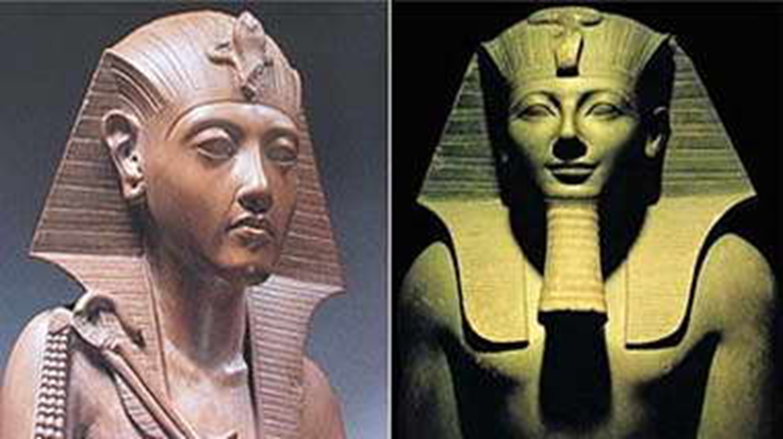
The women who ruled Egypt in ancient civilization. “Hatshepsut” had a peaceful reign, she took care of the trade fleet and she liked to wear men's clothes.. “Tausert” ruled for two years in tense political situations.. and her mother was subjugated to alterations by the kings of the twentieth dynasty.
In the second episode of "Women Ruling Egypt in Ancient Civilization", we will delve into the personalities of two of the most important queens who ruled ancient Egypt. Their great achievements made them remembered by their descendants - today's Egyptians - thousands of years later. Their deaths. One of them was built in his name and still resonates today. Tourists from all over the world visit it to see this greatness that the ancient Egyptians left us: Queen Hatshepsut and Queen Tausert.
Hatshepsut
An Egyptian queen whose achievements are still praised by everyone, a woman who enjoyed a strong personality, wisdom and leadership, and who was able to lead Egypt in a very important period in the history of ancient Egyptian civilization. She is Queen Hatshepsut, the fifth queen in the line of kings of the 18th Dynasty, who reigned after the death of her husband, King Thutmose. The second, as guardian of the young king Tuthmosis III, then she became queen and daughter of the god Amon after publishing a story which she inscribed in her temple at Deir el-Bahri.

?Who is Queen Hatshepsut
Queen Hatshepsut belongs to the 18th dynasty, where King Ahmose, who expelled the Hyksos, is her great-grandfather and the founder of the 18th dynasty. She was born in 1508 BC and was the eldest daughter of King Thutmose I, and assumed the role of queen. domination of Egypt. Because at that time she was the legitimate heir, and there was no legitimate male heir, but she had a half-brother from her father, Thutmose II, from a secondary wife, Mut-Neferet .
The Education of Queen Hatshepsut
Historians have revealed how Queen Hatshepsut was raised, which contributed to the formation of her leadership personality, which allowed her to rule Egypt, where she learned reading and writing, arithmetic, philosophy, religious rituals and rules of language and construction, in addition to learning the words of ancient Egyptian sages, and according to what many historians have revealed. Hatshepsut was afraid of the teacher who taught her lessons and feared his violent methods with her students, regardless of their status. Hatshepsut could not demand any special privileges. treating her, because she was a girl, then she married her half-brother, “Thoutmose II”. Just like the ancient Egyptians of the time, she gave birth to one son and two daughters. The son died in childhood and the two daughters were named Neferu Ra and Merita Ra Hatshepsut. Queen Hatshepsut loved flowers, gardens and trees.
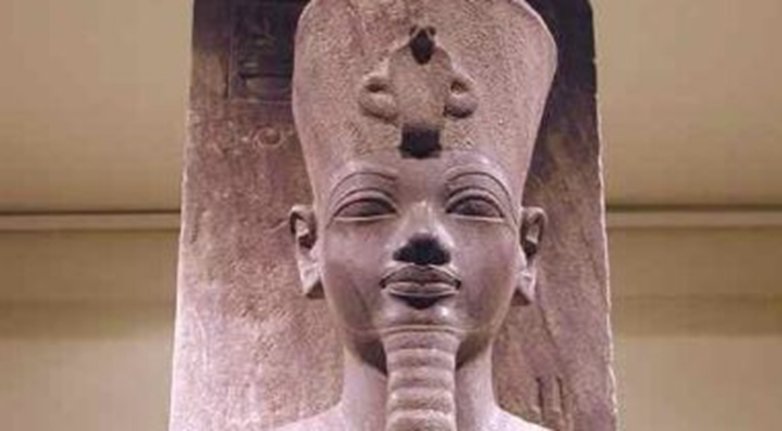
Hatshepsut
?The arrival of Hatshepsut to power
Hatshepsut's father died when she was twenty years old, and during her father's reign she was a participant in his rule and the rightful heir to the throne. However, the traditions of the royal court began to intrude into matters because the idea of a woman ruling and placing all powers in her hands was something that some priests did not like, and there made attempts to include her half-brother Thutmose II in power, and thus Hatshepsut would become only a royal consort. Indeed, preparations for his marriage to Thutmose II began and the latter took over the leadership of the country. According to historians, the most notable characteristic of his personality was that he was weak and sick, which made Hatshepsut the one to rule the government. in his name behind a curtain. Thutmose II wanted to give power to his son, Thutmose III., amid attempts by some priests to prevent Hatshepsut from taking power, but his accession to the throne was a story stranger than fiction. After the death of her husband, Hatshepsut was in the temple attending a celebration during which the procession of the god Amun took place, and the palanquin which carried the statue of Amun stood before Thutmose III after that, refused to move , and at that moment everyone present thought that what had happened was only a sign that Amon had chosen him to share the reign with her. Thutmose III left his job as one of the young priests of the Temple of Amun to enter the royal palace. Competition and bitterness reigned between him and Hatshepsut, which forced the queen to gather supporters around her and form a party that supported her, which became so strong that the pharaoh, who did not have enough experience, became incapable of ruling the country and left power. to Hatshepsut, who will be declared in 1478 BC.
The challenges Hatshepsut faced during her reign
At the beginning of Hatshepsut's reign over Egypt, she faced many problems with most groups of the population, who believed that she was a woman and could not rule the country, because the king was, according to custom, a representative of the reigning god Horus. on earth, which made her dress and adorn herself in men's clothing and spread the news that she was the daughter of Amon to convince the people and that she can rule.
Hatshepsut's most notable achievements
Although there were many attempts during this period to prevent Hatshepsut from taking power, she managed to achieve many results and peace prevailed during her reign, as the trade movement became active with the Egypt's neighbors, after it ordered the construction of several facilities in the country. Karnak Temple, and she also established her temple at Deir el-Bahari in Luxor. She also paid attention to the trade fleet, so she ordered the construction of large ships and their use in internal transportation to transport obelisks, which she ordered to add to the temple of Karnak in honor of the god Amun , in addition to sending ships on missions for commercial exchanges with its neighbors.
The challenges Hatshepsut faced during her reign
At the beginning of Hatshepsut's reign over Egypt, she faced many problems with most groups of the people, who believed that she was a woman and could not rule the country, because the king, according to custom, was a representative of the god Horus. the ruler on earth. This led her to dress and adorn herself in men's clothing, and to spread the message that she was the daughter of Amon to convince the people that she could rule.
Hatshepsut's most notable achievements
Although there were many attempts during this period to prevent Hatshepsut from taking power, she managed to achieve many results and peace prevailed during her reign, as the trade movement became active with the Egypt's neighbors, after it ordered the construction of several facilities in the country. Karnak Temple, and she also established her temple at Deir el-Bahari in Luxor. She also paid attention to the trade fleet, so she ordered the construction of large ships and their use in internal transportation to transport obelisks, which she ordered to add to the temple of Karnak in honor of the god Amun , in addition to sending ships on missions for commercial exchanges with its neighbors.
At the beginning of Hatshepsut's rule over Egypt, she faced many problems with most groups of the population, who believed that she was a woman and could not rule the country. According to custom, the king was a representative of the god Horus, the ruler of the earth, who made her dress and adorn herself in men's clothing, and spread the news that she was the daughter of Amun to convince the people she could govern. .
Hatshepsut's most notable achievements
Although there were many attempts during this period to prevent Hatshepsut from taking power, she managed to achieve many results and peace prevailed during her reign, as the trade movement became active with the Egypt's neighbors, after it ordered the construction of several facilities in the country. Karnak Temple, and she also established her temple at Deir el-Bahari in Luxor. She also paid attention to the trade fleet, so she ordered the construction of large ships and their use in internal transportation to transport obelisks, which she ordered to add to the temple of Karnak in honor of the god Amun , in addition to sending ships on missions for commercial exchanges with its neighbors.
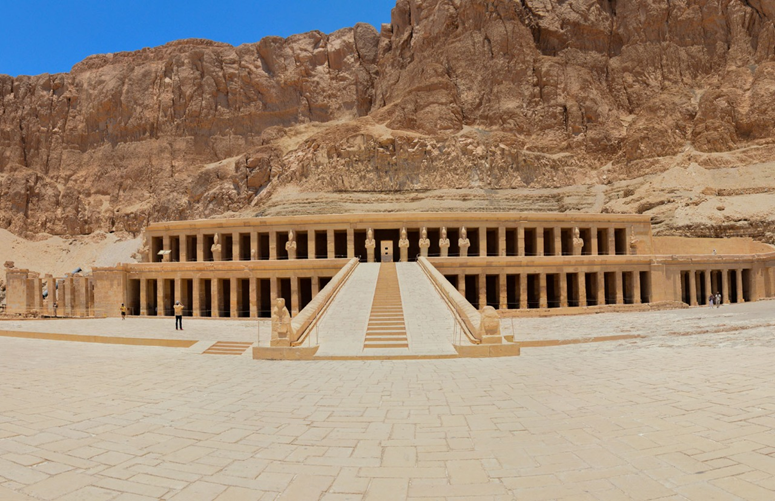
Temple of Hatshepsut
During his reign over Egypt, the demand for entertainment materials brought by the trading fleets of neighboring countries increased, the most important being incense, perfumes, spices, plants, tropical trees, predatory animals and skins. She reopened quarries and mines, particularly the copper and malachite mines of the Sinai Peninsula, after work in these mines had ceased during the period of Hyksos occupation of Egypt. They also reused a canal connecting the Nile, at the end of the delta, to the Red Sea, and ordered the cleaning of the mines. canal after the Egyptians dug it during the Middle Kingdom era, in order to direct the Egyptian naval fleet through it to the Gulf of Suez and then to the waters of the Red Sea.
Death of Hatshepsut
Queen Hatshepsut died in 1457 BC. It was during the 22nd year of her reign, as indicated by an inscription on a plaque found at Arment, where Hatshepsut's mummy was checked, which confirmed that the signs of her death were signs of natural death and that the cause of death was cancer or diabetes.
Hatshepsut's tomb
Hatshepsut's tomb is located in the Valley of the Kings and some historians believe that Hatshepsut expanded her father's tomb in order to use it and that a coffin of her own was found next to her father's coffin . A photo of his father's mummy was also taken. Queen Hatshepsut in which she appears with a dreamy and peaceful smile. The photo shows Queen Hatshepsut enjoying soft and beautiful hair.
Queen Tausert
Queen Tausert is considered the last pharaoh of the Nineteenth Dynasty, and she is also the last queen to rule Egypt from a local family. She ruled Egypt for seven years, some of which was in partnership with Mecca Ptah, which is why many historians believe that the period of her rule over Egypt alone was from 1191 to 1190 BC, so that some believe she reigned in the future for two or three years.
Queen Tausert
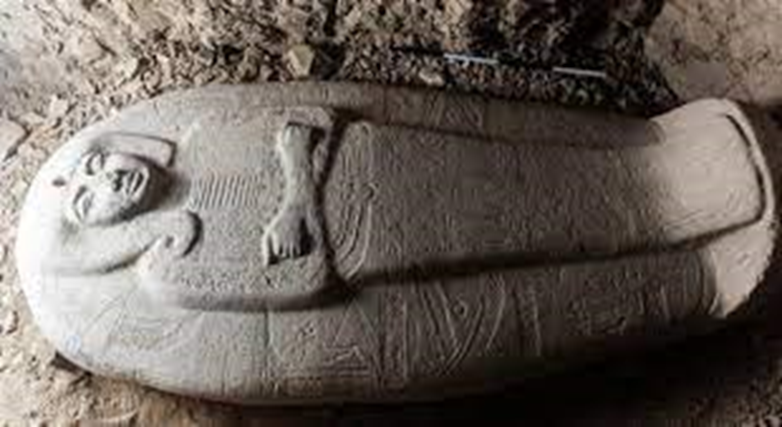
?Who is Queen Tausert
She is the daughter of King Merneptah and the sister of Amenemesa. Some historians have confirmed that she was the second wife of Seti II and the KV56 cemetery showed the graves of their children. Queen Tausert became the first regent of Seti, the heiress of King Siptah, after the death of her husband. Some historians believe that Queen Tausert's reign was with the help of Chancellor Bey. However, a published document reveals that Chancellor Bay was executed on Siptah's orders during the fifth year of the king's reign. Historians have also confirmed that excavations were carried out during her reign in the turquoise mines of Sinai and Palestine, and that statues of her were found at Heliopolis and Thebes.
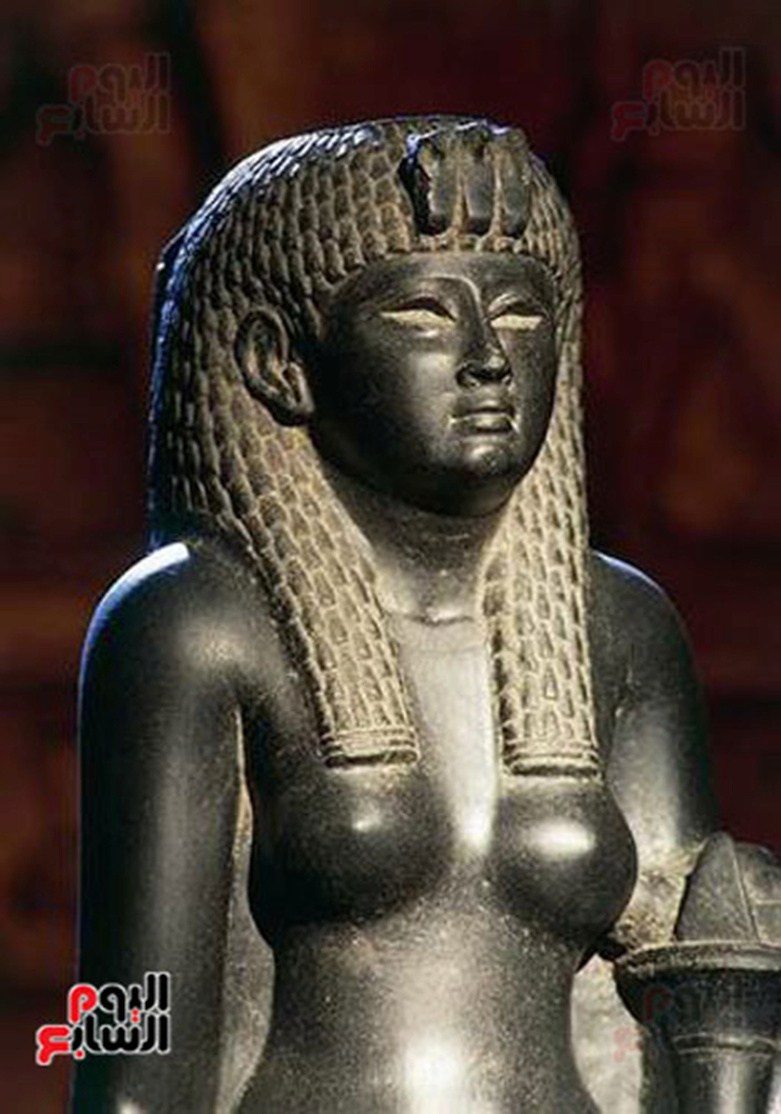
Queen Tausert
The end of Queen Tausert's reign and her most significant archaeological discoveries
Tausert's reign ended in a civil war led by his heir Si-nakhe, who became the founder of the Twentieth Dynasty. The queen built a funerary temple next to the Ramesseum, but it was not completed. Additionally, Tausert's tomb is Tomb KV14, at the Valley of the Kings, and there are scenes depicting Tausert accompanied by her husband, Siptah. However, the name of Siptah was later replaced by the name of Seti II, as he took over the tomb and expanded it to become the deepest royal tomb in the valley. A mummy was also found in KV35 called "The Unknown Woman D" and some experts have identified it as possibly belonging to Queen Tausert.

Queen Tausert's coffin
Director of the BA Museum of Antiquities: Queen Hatshepsut is one of the most famous and powerful queens of the pharaohs, and Tausert lived through a very anxious period in ancient Egyptian history.
Queen Hatshepsut is considered one of the most famous and powerful queens of the pharaohs, and the life of this famous queen was an exciting one. His death and the mystery of his disappearance from the scene were even more exciting. The beginning came when King Thutmose II married his half-sister Hatshepsut, daughter of King Thutmose I and Queen Ahmose, the king's sister and the king's eldest wife. Hatshepsut inherited the position of "wife of the god Amun" from Meritamun, and used it as her preferred title.
?How did Hatshepsut rule Egypt
Hatshepsut gave birth to her brother, King Thutmose II, an only daughter, Princess Neferu Ra, with no male heir. Then the king died, after about thirteen years in power, and the reign passed to his son, Prince Thutmose III. Who was Thutmose II's son from one of his royal harem wives, Lady Isis, and as Thutmose III was a child, and his mother Isis was not qualified for guardian, as she was not of blood royal, the ambitious and powerful Queen Hatshepsut assumed guardianship of her husband's son, the young prince, for a time.
?How did Queen Hatshepsut dress and decorate herself like men
Hatshepsut was tempted by his ambition and the brilliance of power, so she acted as if she were a male king. She was mentioned in texts and depicted in scenes in the form of male kings. She took a new title, "Lady of Two". Lands", which was equivalent to the traditional title of the Egyptian king, "Lord of the Two Lands", then she ordered the construction of two obelisks in front of her. Karnak Gate, became king and proudly inscribed his new titles on his monuments. This occurred during the seventh year of her reign, and she assumed all five royal titles that kings assigned to themselves.
?What did the name Hatshepsut mean to the ancient Egyptians?
Her full name is “Ghanmet-Amun Hatshepsut,” which means “she who is united with Amon, the best of women.” » She did not forget King Thutmose III and considered him as her co-ruler with her, as well as the years of their reign. together dated from the first year of his accession to the throne. However, Hatshepsut was the only king of Egypt. Dominant, and towards the end of his life, Thutmose III reached the same status as her.
?What are the most notable characteristics of Queen Hatshepsut
She is the greatest of the great, the most beautiful of the beautiful, the best of women, the strong woman who shook the world and who made everyone yearn for respect and respect for Egypt and for this woman who amazed everyone with her beauty, her charm. , strength of personality, intelligence and richness of events during the period of his rule over Egypt.
?How did Hatshepsut try to convince the ancient Egyptians to bring a woman to the country
Queen Hatshepsut claimed that she was the daughter of the god Amun, the god of Thebes and the modern state, and that this god admired her mother, Queen Ahmose, had sexual relations with her, and gave birth to the Queen Hatshepsut to be the rightful heir to rule the country, since Queen Ahmose was represented in the form of the goddess "Mut", the wife of the god Amon, and the god Amon was represented in the form of his human husband, King Thutmose I, father of Hatshepsut.
?What are the most notable achievements of Hatshepsut's reign over Egypt?
Egypt's foreign policy during her reign was characterized by innovation, as she sent an Egyptian sea voyage to the land of Punt, located south of the Red Sea. This journey, with all its landmarks, its details and the nature of this country, was also depicted on the walls of its temple of Deir el-Bahari, considered one of the most beautiful architectural and artistic models in the history of Ancient Egypt, Queen Hatshepsut also implemented an extensive architectural program.
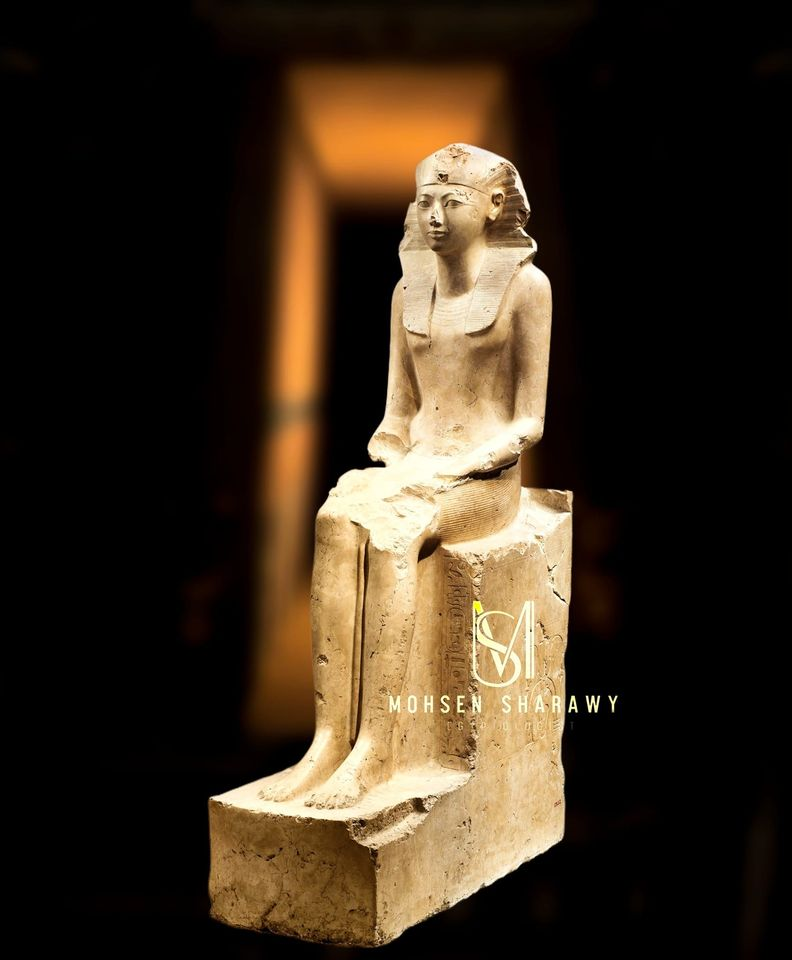
?How did the end of Hatshepsut’s reign unfold
This is indeed one of the mysterious things in the story of this queen, but recently, while studying a molar found inside the box of the queen's entrails in the mummy cache in Deir el-Bahari, along with all the mummies' teeth and examining them with from the Queen's Tomb No. 20 in the Valley of the Kings, and that this tooth belonged to the mummy of Queen Hatshepsut, because she died at the age of 50, and that she was round and suffered from diabetes and that she died of cancer.
?Let's move on to Queen Tausert. What is the most important information about him
The Egyptian historian Manetho Al-Samnoudi called her "Thorius", and she ruled Egypt for two years as a solo king, and her name has great meaning for the ancient Egyptians when it means strong queen.
?How did Queen Tausert rule Egypt
Tausert was the eldest wife of Seti II. Because his successor died, the throne passed to Ramesses-Saptah, who was Seti II's son by a secondary wife. From the third year of this king's reign, he changed his name to Merneptah-Saptah. This king was ill, as was evident from his mother's examination, so he needed a partner in government, and his mother was not fit to do so, so Tausert played this role for his in-law. son, and Saptah did not do it. left him proof of the existence of a royal wife, so Tausert ruled in her name, and for this reason he did not feel the need for another wife to fill this void, so Tausert practiced this . The turn, then Saptah died without a male heir to the throne, so Tausert ascended the throne and took the title of "king" in its male form, as well as many royal titles such as "Sat-Ra, Meritamun".
?What are Queen Tausert's most notable achievements
She was a great queen and she lived in a very anxious period in ancient Egyptian history, a period that witnessed great events and achieved great successes in her reign, but she was subjected to the destruction and distortion of its history and antiquities. , the theft of his tomb and the falsification of his mummy by the kings of the 20th dynasty.
?What are the biggest challenges Queen Tausert faced during her reign
Queen Tausert rose to power under different circumstances and tense political situations. His accession to the throne was one of the signs of political weakness of this period. The royal family was in its most difficult times and competition for the throne was becoming intense as The Egyptian Empire lost its income from abroad, and there was high inflation and shortages. A severe food shortage and intermittent civil war broke out on the western continent of Thebes.
?Tell us about the details of his temple in Luxor
Queen Tausert built an unfinished temple on the western continent of Luxor, south of the Ramesseum temple of Ramses II, where she made a tomb for herself as king in the Valley of the Kings. At that time, burial was limited to kings. , and his grave was No. 14 among the graves in the valley.
Source: websites

